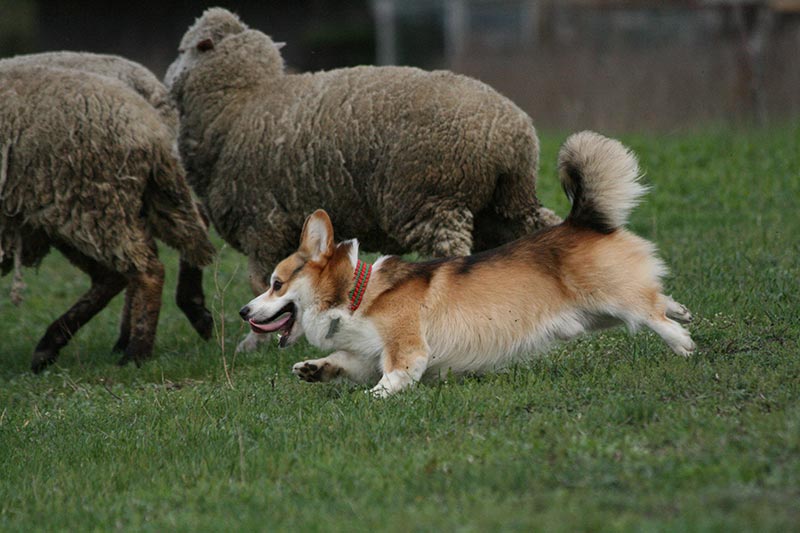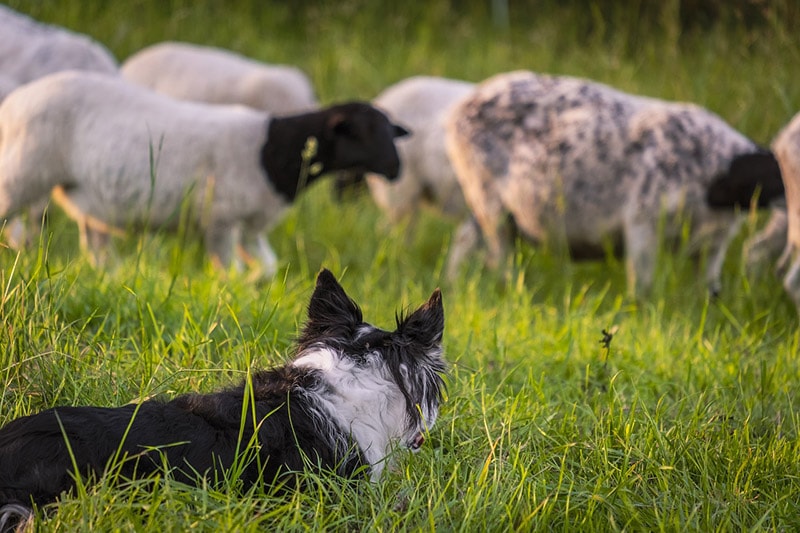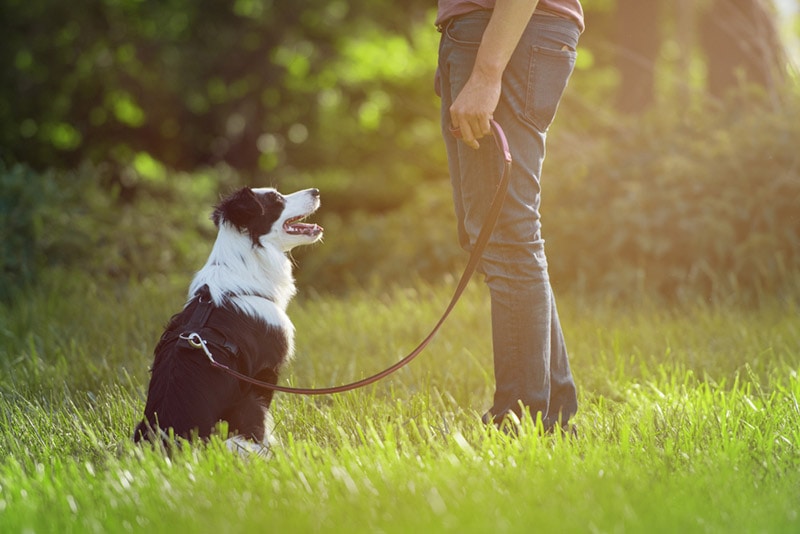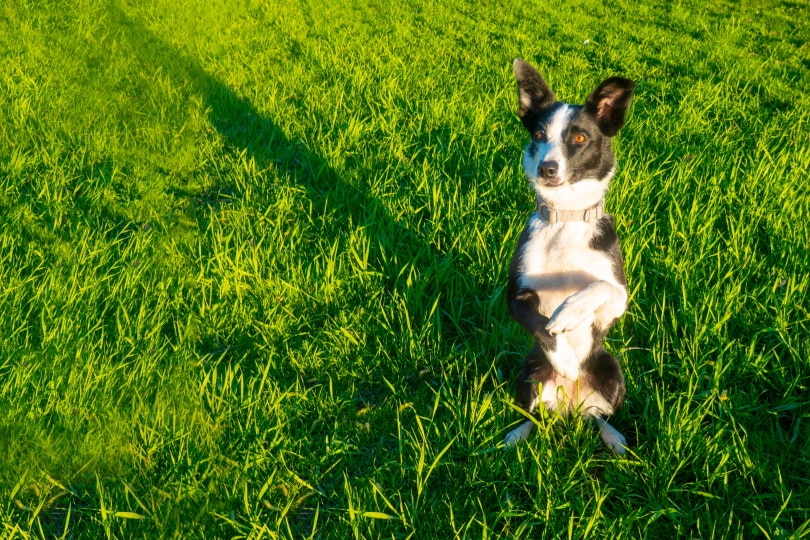How to Train a Dog to Herd: 5 Tips & Tricks
Updated on

Dogs have been at our side for millennia, trained for various tasks like hunting, guarding, or herding. Herding is especially valuable for managing flocks of livestock like sheep or goats, but how to go about training your dog to herd can be unclear.
While not every dog can learn how to herd, training is an excellent way to help satisfy their instincts. The good news is that we have some invaluable informational tips on how to get your dog prepared and used to herding animals. Read on for the details to get started today.
The 5 Tips to Train a Dog to Herd
1. Learn Which Breeds Are Best for Herding
Like any task, some dog breeds are better suited for herding livestock than others. German Shepherds and Border Collies are two of the most well-known herding dogs, and they often show signs of herding at home. Nipping at your heels and trying to guide children or smaller pets in your home are two examples of herding behavior. Another very common sign is if your dog appears to circle around you or other animals.
Generally speaking, nearly any dog with the stamina and intelligence to obey commands can learn to herd. It also depends on their personality. Some dogs don’t care for livestock at all or are too hyper to focus on the task. If you’re interested in more info on whether your dog is suited to herd, consider visiting your vet for more personalized advice.

2. Acclimate Your Dog to Livestock
Before you start any training, you need to get your would-be herding dog used to the animals they’ll be herding. This can be as simple as taking your daily walks nearby the animals you want to expose your dog to, but it gets more complex. Some dogs like to bark or act aggressively toward livestock, which can be hard to train out of them.
Use lots of high-value treats to reward calm behavior. If your dog starts to bark or pull at the leash, firmly say “no” and wait for them to stop. As soon as they do, treat. Your goal is to get your dog to connect the dots between being good around livestock with being a good boy/girl. Some breeds are more stubborn than others at this, so your mileage can and will vary.
3. Obedience Training
Basic obedience training for a herding dog should start early because it will be essential for learning herding commands later on. Commands like “come,” “stay,” “heel,” and “sit” are a good place to start. What’s super valuable about this training is that your dog learns how to give you their undivided attention, even in the face of distractions.
Once you’re confident in your dog’s ability to understand and obey, it’s time to ditch the leash. Herding dogs not only need to obey but obey while off the leash around animals. This process may take a while, but herding breeds are better at sticking to where you want them to be, whether it’s out in the field, guiding livestock, or following at your side at a brisk jog.

4. Learning Essential Herding Commands
First, you want to leash your dog and get a few animals together for them to learn essential herding commands. A few chickens, sheep, or goats would work, but it depends on what critters you have to herd. Next, your dog needs to start learning herding commands. These can vary based on your preferences, but there are several common ones you can use with your dog. Let’s check those out below and what they mean.
Common Herding Dog Commands:
- Come-bye or bye: This means to circle clockwise around the herd in a C-shape.
- Away: This command instructs your dog to circle counterclockwise around the herd.
- Stand or stop: Self-explanatory command when you need to stop the herd.
- Steady: A warning for your dog to slow down their pace if animals are lagging behind.
- Get out or get back: Warning for your dog to put distance between them and the livestock.
- Look or look back: Tells your dog to look for a missing animal lagging behind the herd.
- Bark or speak: This tells your dog to bark at the animals, mostly used with slow, stubborn animals like cattle.
The commands to move in specific directions may take some time, but herding dogs usually catch on pretty fast. Use positive reinforcement methods to help your dog learn even faster and avoid punishments that will only make your dog scared or anxious.
5. Practice!
Herding dogs don’t learn overnight, and you have to ramp up the challenges they face progressively. Starting with remaining calm and guarding chickens is a good beginning point, while herding sheep or driving cattle would be later down the road. Consistency is key at this stage, and you can watch your dog’s confidence grow the more you teach them to herd. After they become confident with one job, you can start introducing more difficult tasks to dip their paws in.
If your dog is still having issues at this stage, you may wish to consult with a vet or professional animal trainer with herding expertise. They’ll be able to observe your dog’s behavior and help work through the most problematic roadblocks you’re facing in training.

 Conclusion
Conclusion
Training a dog to herd starts out with lots of socialization and obedience work, but you also have to consider a breed’s proclivity toward herding. Using positive reinforcement as your cornerstone and the tips above, we’re sure your dog can learn to herd with the best sheepdogs out there.
- Related Read: How To Stop a Herding Dog From Nipping: 8 Tips & Tricks
Featured Image Credit: Inessa Melikova, Shutterstock

 Conclusion
Conclusion








